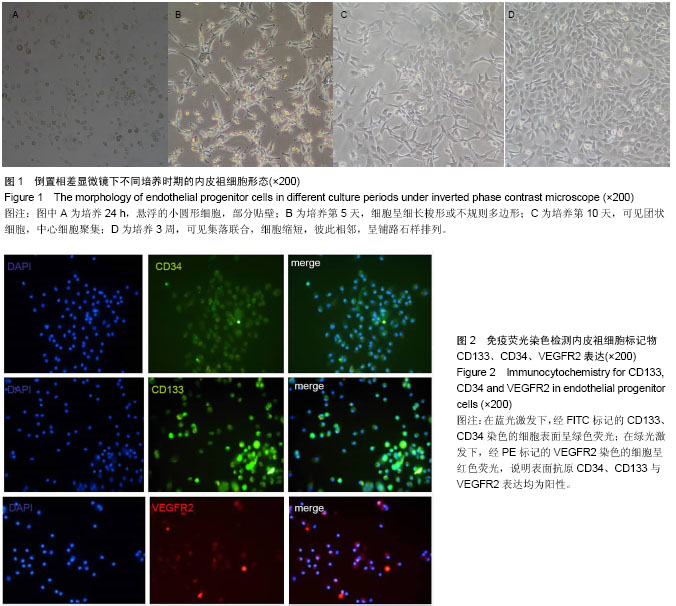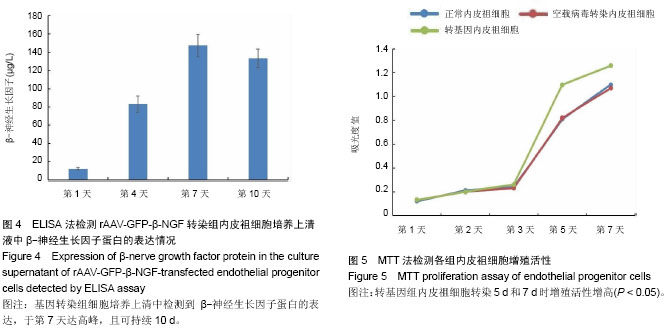| [1] Ahoniemi E, Pohjolainen T, Kautiainen H. Survival after spinal cord injury in Finland. J Rehabil Med. 2011;43(6):481-485.
[2] 孙天胜,王献章,胥少汀.脊髓损伤修复的现状与展望[J].国外医学:骨科学分册, 2003, 24(2): 67-71.
[3] Koda M, Hashimoto M, Murakami M, et al. Adenovirus vector-mediated in vivo gene transfer of brain-derived neurotrophic factor (BDNF) promotes rubrospinal axonal regeneration and functional recovery after complete transection of the adult rat spinal cord. J Neurotrauma. 2004;21(3):329-337.
[4] Tuszynski MH, Grill R, Jones LL, et al. NT-3 gene delivery elicits growth of chronically injured corticospinal axons and modestly improves functional deficits after chronic scar resection. Exp Neurol. 2003;181(1):47-56.
[5] Cao L, Liu L, Chen ZY, et al. Olfactory ensheathing cells genetically modified to secrete GDNF to promote spinal cord repair. Brain. 2004;127(Pt 3):535-549.
[6] Aloe L,Bianchi P,Bellis AD, et al.Intranasal nerve growth factor bypasses the blood-brain barrier and affects spinal cord neurons in spinal cord injury. Neural Regen Res. 2014;9 (10): 1025-1030.
[7] Asahara T, Murohara T, Sullivan A, et al. Isolation of putative progenitor endothelial cells for angiogenesis. Science. 1997; 275(5302):964-967.
[8] Fadini GP, Agostini C, Avogaro A. Endothelial progenitor cells in cerebrovascular disease. Stroke. 2005;36(6):1112-1113
[9] Wrathall JR, Lytle JM. Stem cells in spinal cord injury. Dis Markers. 2008;24(4-5):239-250.
[10] Okano H, Sakaguchi M, Ohki K, et al. Regeneration of the central nervous system using endogenous repair mechanisms. J Neurochem. 2007;102(5):1459-1465.
[11] Michael GJ, Kaya E, Averill S, et al. TrkA immunoreactive neurones in the rat spinal cord. J Comp Neurol. 1997;385(3): 441-455.
[12] Josephson A, Widenfalk J, Trifunovski A, et al. GDNF and NGF family members and receptors in human fetal and adult spinal cord and dorsal root ganglia.J Comp Neurol. 2001; 440(2): 204-217.
[13] Oderfeld-Nowak B, Zaremba M, Lipkowski AW, et al. High-affinity NGF receptor in the rat spinal cord during acute and chronic phases of experimental autoimmune encephalomyelitis: a possible functional significance. Arch Ital Biol. 2003;141(2-3):103-116.
[14] 臧大维,刘娟,Surindar Cheema,等.脊髓损伤后神经营养因子及干细胞治疗对轴突再生的影响:国外基础和临床研究新进展[J].中国组织工程研究与临床康复,2007,11(14):2787-2791,2796.
[15] Chiaretti A, Genovese O, Riccardi R, et al. Intraventricular nerve growth factor infusion: a possible treatment for neurological deficits following hypoxic-ischemic brain injury in infants. Neurol Res. 2005;27(7):741-746.
[16] Williams BJ, Eriksdotter-Jonhagen M, Granholm AC. Nerve growth factor in treatment and pathogenesis of Alzheimer's disease. Prog Neurobiol. 2006;80(3):114-128.
[17] Diensthuber M, Lenarz T, Stöver T. Neurotrophic factor expression in vestibular schwannoma. An overview. Laryngorhinootologie. 2006;85(10):731-737.
[18] Boyer M, Townsend LE, Vogel LM, et al. Isolation of endothelial cells and their progenitor cells from human peripheral blood. J Vasc Surg. 2000;31(1 Pt 1):181-189.
[19] Timmermans F, Plum J, Yöder MC, et al. Endothelial progenitor cells: identity defined. J Cell Mol Med. 2009; 13(1):87-102.
[20] Eggermann J, Kliche S, Jarmy G, et al. Endothelial progenitor cell culture and differentiation in vitro: a methodological comparison using human umbilical cord blood. Cardiovasc Res. 2003;58(2):478-486.
[21] Taguchi A, Soma T, Tanaka H, et al. Administration of CD34+ cells after stroke enhances neurogenesis via angiogenesis in a mouse model. J Clin Invest. 2004;114(3):330-338.
[22] Zhao ZM, Li HJ, Liu HY, et al. Intraspinal transplantation of CD34+ human umbilical cord blood cells after spinal cord hemisection injury improves functional recovery in adult rats. Cell Transplant. 2004;13(2):113-122.
[23] Chen J, Sanberg PR, Li Y, et al. Intravenous administration of human umbilical cord blood reduces behavioral deficits after stroke in rats. Stroke. 2001;32(11):2682-2688.
[24] Chen CT, Foo NH, Liu WS, et al. Infusion of human umbilical cord blood cells ameliorates hind limb dysfunction in experimental spinal cord injury through anti-inflammatory, vasculogenic and neurotrophic mechanisms. Pediatr Neonatol. 2008;49(3):77-83.
[25] He T, Peterson TE, Holmuhamedov EL, et al. Human endothelial progenitor cells tolerate oxidative stress due to intrinsically high expression of manganese superoxide dismutase. Arterioscler Thromb Vasc Biol. 2004;24(11): 2021-2027.
[26] Xue S, Zhang HT, Zhang P, et al. Functional endothelial progenitor cells derived from adipose tissue show beneficial effect on cell therapy of traumatic brain injury. Neurosci Lett. 2010;473(3):186-191.
[27] Di Stefano R, Barsotti MC, Armani C, et al. Human peripheral blood endothelial progenitor cells synthesize and express functionally active tissue factor. Thromb Res. 2009;123(6): 925-930.
[28] Horne MK, Nisbet DR, Forsythe JS, et al. Three-dimensional nanofibrous scaffolds incorporating immobilized BDNF promote proliferation and differentiation of cortical neural stem cells. Stem Cells Dev. 2010;19(6):843-852.
[29] Sun Y, Jin K, Childs JT, et al. Vascular endothelial growth factor-B (VEGFB) stimulates neurogenesis: evidence from knockout mice and growth factor administration. Dev Biol. 2006;289(2):329-335.
[30] Lunn JS, Pacut C, Backus C, et al. The pleotrophic effects of insulin-like growth factor-I on human spinal cord neural progenitor cells. Stem Cells Dev. 2010;19(12):1983-1993.
[31] Ali SA, Pappas IS, Parnavelas JG. Collagen type IV promotes the differentiation of neuronal progenitors and inhibits astroglial differentiation in cortical cell cultures. Brain Res Dev Brain Res. 1998;110(1):31-38.
[32] Yang XT, Bi YY, Feng DF. From the vascular microenvironment to neurogenesis. Brain Res Bull. 2011; 84(1): 1-7.
[33] Xiong Y, Mahmood A, Chopp M. Neurorestorative treatments for traumatic brain injury. Discov Med. 2010;10(54):434-442.
[34] Pluchino S, Cusimano M, Bacigaluppi M, et al. Remodelling the injured CNS through the establishment of atypical ectopic perivascular neural stem cell niches. Arch Ital Biol. 2010; 148(2):173-183.
[35] Jin K, Xie L, Mao X, Greenberg MB, et al. Effect of human neural precursor cell transplantation on endogenous neurogenesis after focal cerebral ischemia in the rat. Brain Res. 2011;1374:56-62.
[36] Madhavan L, Collier TJ. A synergistic approach for neural repair: cell transplantation and induction of endogenous precursor cell activity. Neuropharmacology. 2010;58(6): 835-844.
[37] 杜公文,杜怡斌,张辉,等.血管内皮祖细胞在脊髓损伤修复中的研究进展[J].中国矫形外科杂志, 2013, 21(14): 1423-1426.
[38] Büning H, Nicklin SA, Perabo L, et al. AAV-based gene transfer. Curr Opin Mol Ther. 2003;5(4):367-375. |


